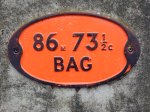[54] Kilroy was Here – a Pictorial Blog about Plaques
Any one my age will recognize this title. When I was young graffiti was non-existent by today’s standards. Now we have freely available spray paint in many colours. Back then we had white chalk for drawing and pen-knives, which could be used for engraving wood and sometimes stone walls. If you did see any graffiti, which was unusual, it was probably just a name, perhaps with a date.
I am indebted to Wikipedia for a fairly extensive description of this phenomenon. I will give a more concise summary.
The graffiti ‘Kilroy was Here’ appeared and spread in World War II, and was instantly recognizable. Often it was accompanied by a doodle of the character Chad. Origins of both are disputed but Kilroy seems to have come from GIs (American soldiers) in the Forties. Chad is of slightly earlier UK origin, possible from the RAF or a British cartoonist.
I wish I could show you a picture of Chad – but for this blog I have foresworn the use of pictures – allowing only those taken by me during this year. He appears as the top half of a bald head (possibly with a single curly hair) peering over a wall. His long nose comes down over the wall and his two hands are at the sides as if he is pulling himself up to look over the wall. In an age of rationing Chad sometimes had the slogan ‘Wot, no sugar?’ (Or other commodity) before he became so associated with Kilroy.
I am not going to talk about graffiti. I am going to talk about signs that appear on walls.
Plaques
Before I started this I thought that blue plaques were a straightforward countrywide phenomenon but I soon found out that things are not so simple. Once again Wikipedia has been helpful. The earliest blue plaques, erected to commemorate a historical link between a building and a famous person, are in London.
In the Nineteenth Century the system was controlled by the Society of Arts. From 1901 the London County Council took over, becoming the Greater London Council in 1965. Since 1986 it has been English Heritage.
There are many other similar schemes, generally restricted geographically or culturally – and not all are blue!
Cheltenham Blue Plaques
I wanted to include the three famous people I have learned to associate with Cheltenham – Gustav Holst, Edward Wilson and Edward Jenner but in the process of writing this I decided to split them off and you can read about them elsewhere. To be honest they were not an impressive source of blue plaques.
I haven’t looked specifically for any others but I walk in and around Cheltenham often and I have been looking carefully for blue plaques. I have found a few quite similar to the traditional blue plaque but not quite such a vivid dark blue. They are produced by the Cheltenham Civic Society.






I have to admit that I have only ever heard of two of these six. Francis Close is quite famous locally. He was the rector of Cheltenham Parish Church in the early Nineteenth Century and is commemorated in two local educational establishments – Dean Close School and Francis Close Hall (now a campus of the University of Gloucestershire.) Also I am very much of the Rolling Stones generation.
I will generally leave it to you to read the wording on these plaques. You will note that, while each one has the Civic Society identified at the top, they have different sponsoring organisations identified at the bottom.
I won’t even tell you where I found them.
More from Cheltenham
There are many other plaques in Cheltenham. I will go for the other blue looking ones next. You can read them yourselves.
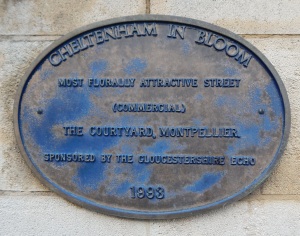
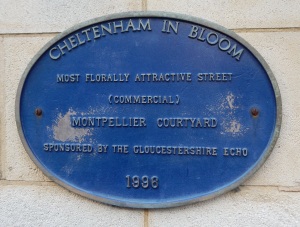



These also all seem to involve two organisations involved and for the Civic Awards we now have the Civic Society taking the other role. (I’m not totally clear what the two roles are!)
While I note that some of these are a nice vivid blue I also note that they seem to fade with age. Maybe these ones are not expected to last so long.
Now we have some that are not round and blue.
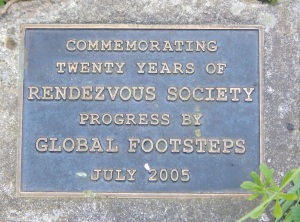
This one is strange. It’s on the Honeybourne Path on the ground almost hidden my plants. I spotted it recently after passing it dozens of times. I had never heard of the Rendezvous Society. It’s a small local charity working through Cheltenham and its twinned towns abroad.


Two railway related plaques. The first is on a house that until recently was a pub. The second is at the main entrance to Waitrose, my local supermarket. They are not so much about the buildings as what used to be there before them.

I have to include this one, which I missed when doing Statues. You can see the fountain there (not working.)

Here is one about another fountain tucked away in a corner not far away. (Yes, the sun was out and my shadow is in the way.) This is not the place to show you this fountain.

This one on the Everyman Theatre was so high on the wall that it was quite difficult to spot. The Churchill Gardens are something else you might miss if you didn’t know where to look.



These two may look majestic in black but they are not the most exciting ones I found.
Not Quite Plaques
I don’t know if the next come into the definition of plaques but they are signs on buildings telling us something about the buildings. Think of this blog as a loosely defined as a sub-category of signs. These ones come without comment. 
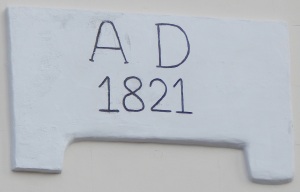



Cirencester Civic Society
I spent a day in Cirencester with friends and we took a walk around part of its historic centre. We just happened to pick a walk with lots of plaques. Here in random order are some of the Cirencester Civic Society plaques we found.
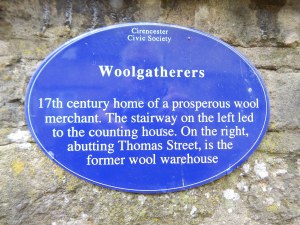



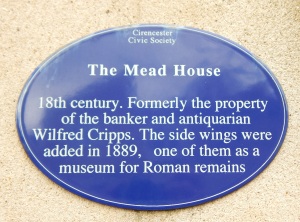



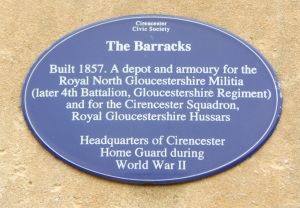
(The walk came from a leaflet that showed lots more of these in the town.)
More from Cirencester
There were other plaques and stone wall signs. Here are some more in no particular order without comments.


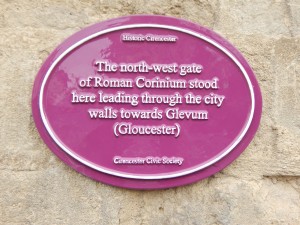



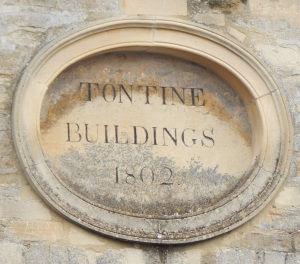



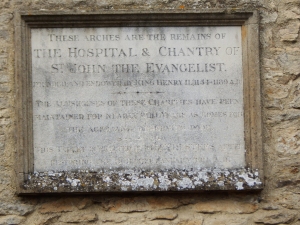
Other Places
Two from Bournemouth.


Three from the Thames Path near Oxford.



One from Oxford and one from Stow-on-the-Wold.


There are other pubs in England making similar claims to the one above.
I will end with an enigmatic sign on a railway bridge near to where I live.
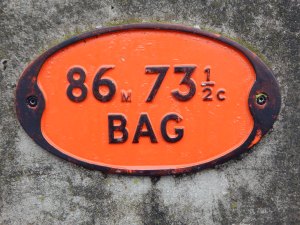
I have no idea what it means!
[I have adjusted the contrast of some old and worn signs to make them more legible.]

